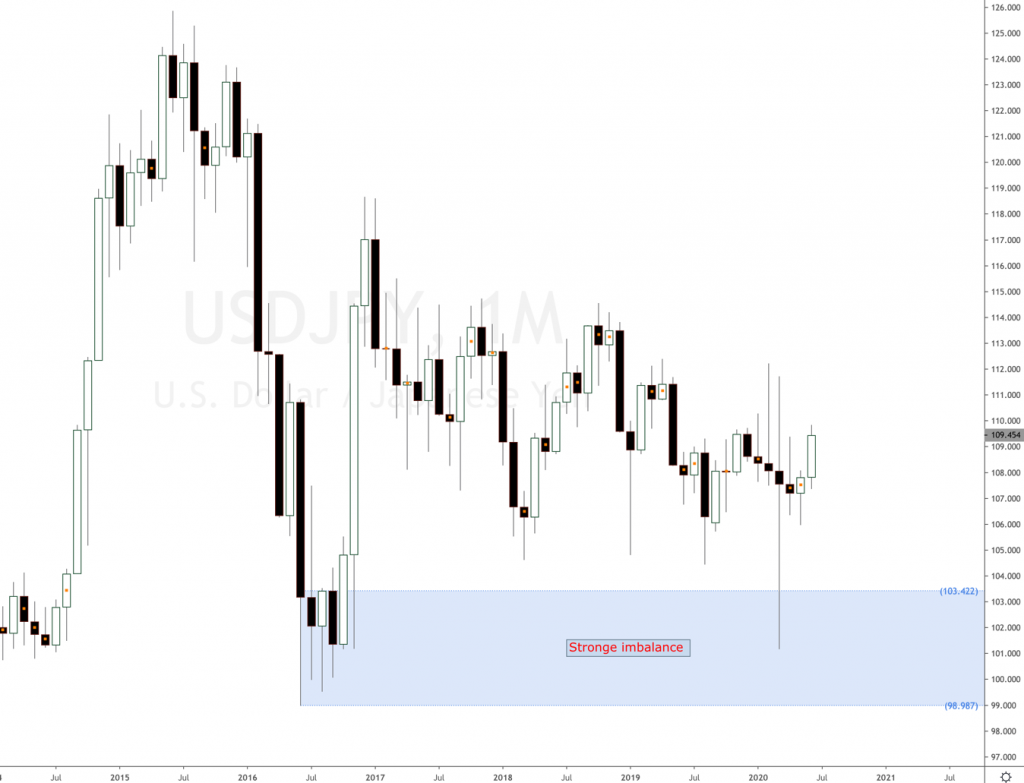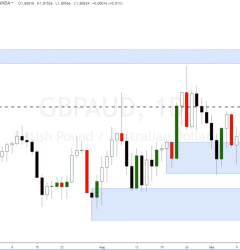08 Jun

Have you wondered why USDJPY major Forex cross-pair is rallying so strongly? It’s pretty simple. A super strong monthly demand imbalance took control last March 2020, and it’s been rallying ever since. A very similar Forex trading scenario can be seen on EUR USD Forex’s major cross-pair discussed in our blog in previous months.
USDJPY analysis buy opportunity
If you are a Forex intraday trader or scalper, you might have seen a few of your USDJPY short positions fail. Why? Because a big force like the one seen on USDJPY around 101 will eliminate small chunks of sell orders on the way up. Every candlestick in the USDJPY Forex cross-pair technical analysis below represents a month. You can use other strategies to go long on USDJPY, even those forex trading strategies that use indicators. We don’t need any of that as supply and demand traders.

USD to JPY price action analysis
This is the kind of price action technical analysis you will learn in our trading community. You will learn how to locate new supply and demand imbalances and trade without using any indicators, no news, no fundamental analysis, no earnings announcements, no volume or VSA analysis. Just supply and demand imbalances.
Trading supply and demand imbalances is ideal for beginners and those with a full or half-time job. You won’t need to stay in front of the computer all day long trying to move price action with your mind.
USD/JPY high odds Supply and Demand
As supply and demand traders, we do not need to pay attention to the news, fundamentals or any earnings reports. Once a big timeframe imbalance has gained control, earnings do just the opposite and react strongly to those imbalances. Why do you see positive earnings, then the underlying stock drops like a rock, or a negative earnings announcement and the stock rallies like a rocket out of control? You are probably missing the fact that there are big imbalances in gaining control.
You should not worry about fundamentals or earnings announcements unless you are doing very short-term trading and scalping.
You can use these imbalances to plan your trades in lower timeframes. Trading is just waiting for the right trigger points and scenarios to present themselves, this game has got a name and it’s called the waiting game. We need to patiently wait for the correct scenarios and setups to happen and wait for the price to pull back or dip into the price levels we want to trade, in our case these price levels are made of supply and demand imbalances.
Join our supply and demand forex trading course to learn how to use our supply and demand trading strategy.
There are several ways of buying stocks and futures. When trading stocks, you can buy shares of the underlying stock or use options strategies to go long or short at these specific supply and demand levels, long calls or long puts or spreads. You can even buy a CFD (contracts for difference) if you are in a country where it’s allowed.








